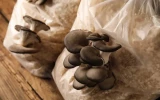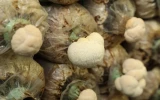When To Open Mushroom Fruiting Bags: Perfect Timing
Mushroom fruiting bags are a convenient and reliable way to grow mushrooms at home. However, timing is everything when it comes to harvesting your mushrooms. Knowing when to open your mushroom fruiting bags is crucial for getting the most out of your crop. In this article, we'll discuss the best time to open your mushroom fruiting bags.
In general, you should plan to open your mushroom fruiting bags when the mushrooms are ready to fruit, the humidity and temperature levels are optimal, and the mushrooms are fully mature. The timing for opening mushroom fruiting bags depends on several factors, including the growth stage of the mushrooms.
With the right timing, you'll be able to maximize your harvest and have a bountiful crop of mushrooms. Below, you'll find useful tips on what signs to look for that indicate that it's time to harvest your mushrooms.
Summary
- The timing and conditions for the growth stages of each mushroom species may vary depending on the specific strain and growing environment.
- Checking the humidity level before opening the fruiting bags can help you make any necessary adjustments before exposing the mushrooms to the air.
- Monitor the growth of your mushrooms closely and adjust the conditions as needed to ensure a successful harvest.
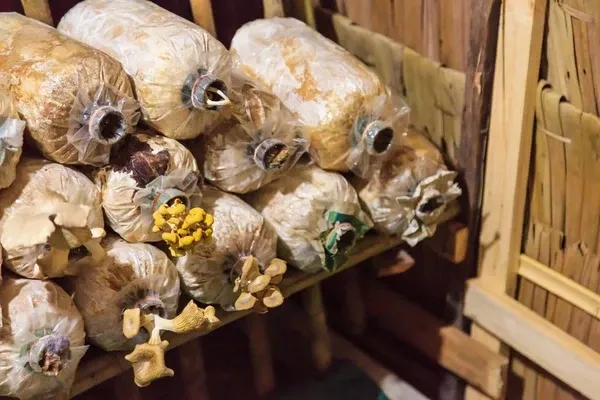
On this page:
Know The Perfect Time To Open Mushroom Fruiting Bags
Generally speaking, you should open your mushroom fruiting bags once the mushrooms are ripe, the humidity and temperature are ideal, and the mushrooms are ready to fruit. Here are some general guidelines to help you determine the perfect timing for opening your mushroom fruiting bags:
1. Know the growth stages of your mushrooms
Different mushroom species have different growth stages, and knowing the growth stages of your mushrooms can help you determine the ideal timing for opening their fruiting bags.
2. Observe the growth of your mushrooms
Keep an eye on the growth of your mushrooms and note any changes in their appearance. When the caps of your mushrooms begin to turn up and the stems elongate, it is usually a sign that they are ready to fruit.
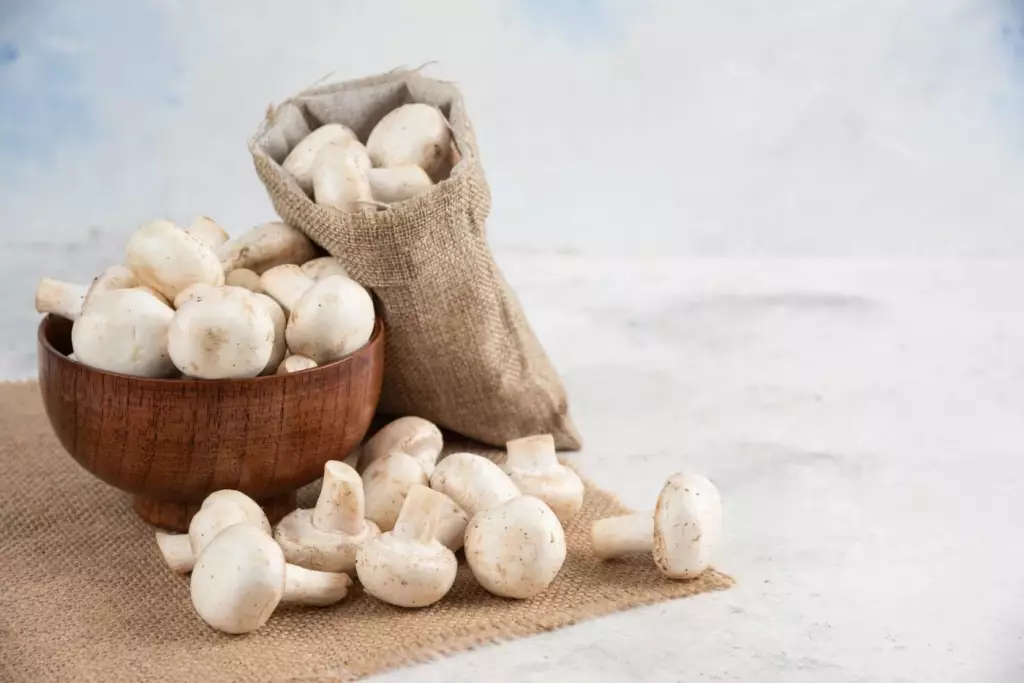
3. Check the humidity level in the fruiting chamber
Before opening your mushroom fruiting bags, make sure that the humidity level in the fruiting chamber is within the ideal range for your specific type of mushroom. Here are a few ways to check the humidity level:
-
A hygrometer is a tool used to measure the relative humidity in the air. You can place a hygrometer in your fruiting chamber to measure the humidity level. Most mushroom species require a humidity level between 80 and 95 percent.
-
If the humidity level is too low, you can increase it by misting the fruiting chamber with water or adding a humidifier.
-
If the humidity level is too high, you can increase airflow by opening the vents or adding a fan.
-
If you notice condensation, you can decrease the humidity level by increasing airflow or decreasing the amount of water used to mist the fruiting chamber.
4. Monitor the temperature in the fruiting chamber
The temperature in the fruiting chamber should also be within the optimal range for your mushroom variety. Most mushrooms grow best between 65°F and 75°F (18°C and 24°C).
5. Wait until the mushrooms are mature
It is important to be patient and wait until your mushrooms are fully mature before harvesting them. Depending on the type of mushroom, this can take anywhere from several days to several weeks. Before opening a fruiting bag, it's important to check for signs of maturity to ensure that your mushrooms are ready to fruit and harvest.
Here are some signs to look for:
-
Check the fruiting bag for the presence of white mycelium growth, which is a sign that the substrate has been fully colonized by the mushroom mycelium. This is an important indicator that the mushrooms are ready to fruit.
-
Look for small pinheads, or primordia, which are tiny mushroom growths that will eventually develop into mature mushrooms. The formation of pinheads indicates that the mushrooms are ready to fruit, and the fruiting bag can be opened.
-
For mushrooms such as shiitake or button mushrooms, look for a veil break, which is the point at which the cap separates from the stem. This is a sign that the mushrooms are fully mature and ready to harvest.
-
Check the color of the mushroom caps, which should be a dark brown or black color for some mushroom species like shiitake. This indicates that the mushrooms are fully mature and ready to be harvested.
-
Look for mature mushrooms that have reached their maximum size and shape. For example, oyster mushrooms should have broad, flat caps and thick, firm stems.
By following these guidelines and monitoring the growth of your mushrooms closely, you can ensure a successful harvest.
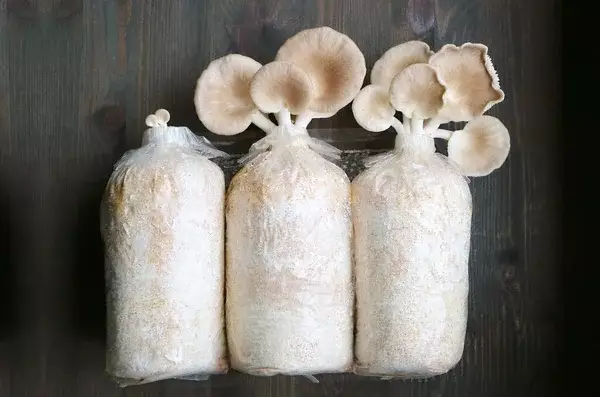
The Timing to Open The Fruiting Bags of Different Mushroom Species
Different mushroom species have different ideal timings for opening their fruiting bags. Here are some examples of common mushroom species and when it is typically recommended to open their fruiting bags:
1. Shiitake mushroom fruiting bags can be opened after 14–21 days
Shiitake mushrooms typically take 14–21 days to fully colonize their substrate. Once the substrate is fully colonized, the fruiting bags should be opened and placed in a fruiting chamber with high humidity and moderate to low light. The mushrooms will usually begin to fruit within a few days of being exposed to these conditions.
2. Oyster mushroom fruiting bags should be ready to open after 10–14 days
Oyster mushrooms usually take around 10–14 days to colonize their substrate. Once the substrate is fully colonized, the fruiting bags should be opened and placed in a fruiting chamber with fresh air and high humidity. The mushrooms will typically begin to fruit within a few days of being exposed to these conditions.
3. Button mushroom fruiting bags can also be opened after 14–21 days
Button mushrooms typically take around 14–21 days to fully colonize their substrate. Once the substrate is fully colonized, the fruiting bags should be opened and placed in a fruiting chamber with moderate humidity and low light. The mushrooms will usually begin to fruit within a few days of being exposed to these conditions.
4. Enoki mushrooms fruiting bags should be opened after 14–21 days
Enoki mushrooms usually take around 14–21 days to fully colonize their substrate. Once the substrate is fully colonized, the fruiting bags should be opened and placed in a fruiting chamber with cool temperatures and moderate humidity. The mushrooms will typically begin to fruit within a few days of being exposed to these conditions.
It's important to note that these are general guidelines, and the exact timing and conditions may vary depending on the specific strain of mushroom and the growing environment. It's important to monitor the growth of your mushrooms closely and adjust the conditions as needed to ensure a successful harvest.

How to Open Mushroom Fruiting Bags
Opening mushroom fruiting bags can be a delicate process that requires a sterile environment and careful handling to avoid contamination. Here's a step-by-step guide on how to open mushroom fruiting bags:
1. Prepare a clean workspace before opening the fruiting bags
Make sure that your workspace is clean and free of any potential sources of contamination. Wear gloves, a mask, and a hairnet to prevent contamination from your body.
2. Sanitize your tools to open the fruiting bag
Use a sterilized knife or scissors to cut open the bag. Dip the blade of your knife or scissors into rubbing alcohol or a bleach solution, and then let it dry completely before using it.
3. Cut open the fruiting bag
Carefully cut open the top of the fruiting bag, making sure not to touch the substrate or any part of the mushroom growing inside. Make a straight cut along the top of the bag, leaving enough space for the mushrooms to grow.
4. Spray the inside of the fruiting chamber
Before removing the bag, spray the inside of the fruiting chamber with water to create a humid environment. This will help the mushrooms grow and prevent them from drying out.
5. Remove the fruiting bag from the chamber
Gently remove the fruiting bag from the chamber, being careful not to damage any of the mushrooms. If the mushrooms are growing in clusters, gently separate them from each other.
6. Place the mushrooms in the fruiting chamber
Place the mushrooms in the fruiting chamber and mist them with water to keep them moist. If you're growing mushrooms that require light, make sure to place the fruiting chamber in a well-lit area.
7. Monitor the mushrooms after opening their fruiting bags
Check the mushrooms regularly for signs of growth and adjust the temperature, humidity, and lighting as needed to promote healthy growth.
Always follow the instructions for your specific strain and be careful not to introduce any contaminants during the process.
